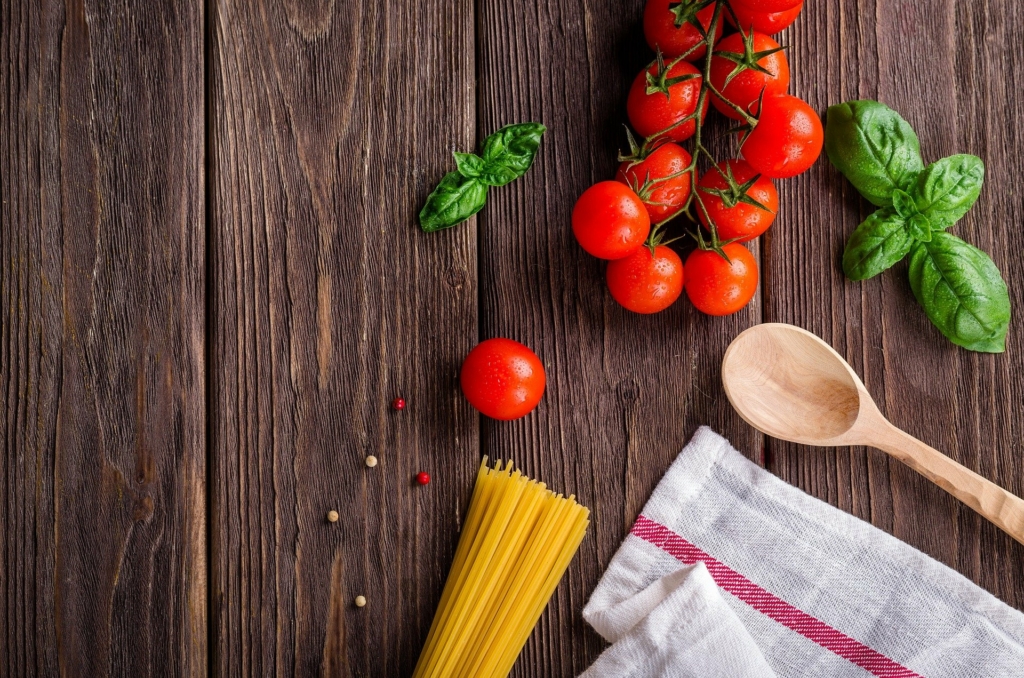Summer is finally here and that means it is time to enjoy all the wonderful fruits and vegetables that are now available at grocery stores, farmers markets, or your own backyard garden. And one of the most popular summer fruits, though used like a vegetable by most, is the tomato. They come in all shapes and sizes, but there is nothing that spells summer like a fresh tomato salad or a slice of tomato on your burger, hot off the grill. Best of all, they are good for your health.
Tomatoes are a major dietary source of antioxidants lycopene and beta-carotene as well as many other vitamins and minerals that are important for good health, including vitamin C, vitamin K, potassium, and folate. Tomatoes are also high in fiber and low in carbohydrates and calories. An average small tomato contains 18 calories and 5 grams of carbohydrate which comes from insoluble fiber which has been shown to help lower cholesterol levels in the blood.

Researchers have studied the health benefits of lycopene, vitamin C, and beta-carotene extensively and recent observational studies showed consumption of tomatoes and high amounts of lycopene was associated with the prevention of prostate, lung, stomach, and breast cancer. An article in the Journal of Nutritional Science and Vitaminology (2015) found that a high intake of tomatoes and tomato products had a moderately beneficial effect on reducing the incidence of prostate cancer, however more research is needed to determine what type and amounts of tomato products are most effective.
But the reason for eating tomatoes gets even better. A study published in the Journal of Clinical Nutrition (2018) concluded that high dietary intake of fruits and vegetables rich in vitamin C, carotenoids (e.g., lycopene), and other antioxidants was associated with a reduced risk of cancer, heart disease, and premature mortality. The researchers presume that it was not the individual antioxidants that reduced the risk, but a collection of components found in fruits and vegetables, thus making a strong case for the consumption of tomatoes for good health.
Tomatoes come in hundreds of varieties, many of them hybrids, and studies have found that the vitamin and plant compounds such as lycopene and beta carotene can vary widely between tomato varieties but no one variety is considered better than another for nutritional benefit.
There are basically six types of tomatoes; each one has a different use in the kitchen and a variety of ways that they can be prepared. Here is a short review of each type.
Grape
The smallest and most easily grown in a backyard garden or potted on a deck. Grape tomatoes are low in calories at 1 calorie per tomato and make a great snack or salad ingredient.

Cherry
Twice the size of a grape tomato, these are very juicy and well suited as kabobs on the grill, made into a simple tomato sauce, or eaten raw as a snack.

Roma
Sometimes called Plum tomatoes, these are oblong in shape, sweet, and juicy. They are best for making sauces, roasting, or canning.

Heirloom
Are non-hybrid and the seeds are passed down from one crop to the next. They come in a range of colors including red, green, yellow, purple, and reddish purple. They are also often misshapen and may not look very appetizing but are prized for their sweet flavor. Don’t judge a book by its cover!

Beefsteak
Large, round, and firm, are great for slicing as they hold their shape and are great on a sandwich.

Vine Ripened
These are tomatoes still attached to the vine when sold which prolongs their shelf life. Vine ripened tomatoes have been shown in research to contain somewhat higher levels of antioxidants and other nutrients than those picked before being fully ripened. These tomatoes are great for making a caprese salad, layering on pizza, or putting in a BLT.

Feature Image: Hans Braxmeier from Pixabay



